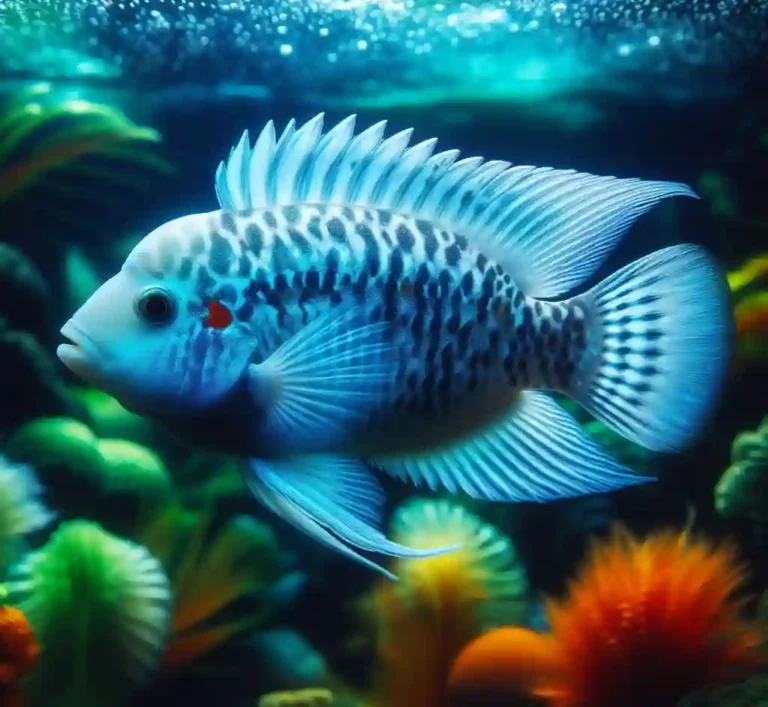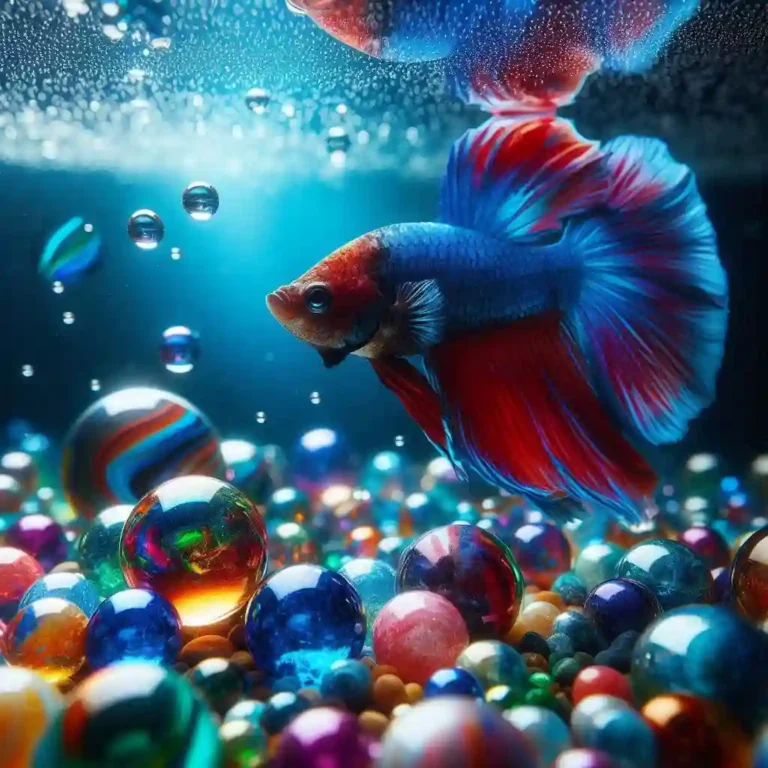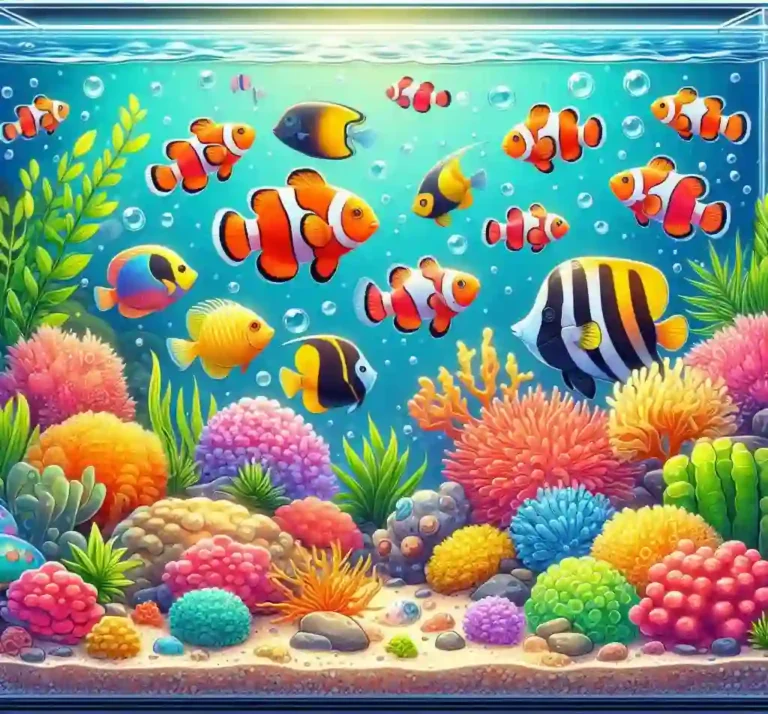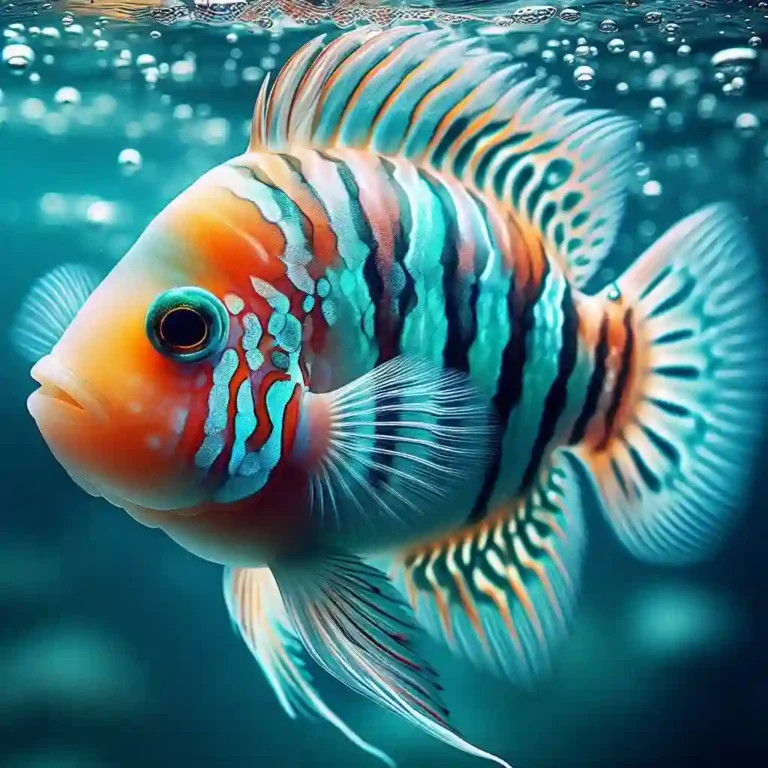Can Tetras Live with Bettas? The Ultimate Compatibility Guide
Can Tetras Live with Bettas? Are you considering creating a thriving community aquarium, but wondering if two of the most popular freshwater fish – tetras and bettas – can coexist peacefully in the same tank?
In this ultimate guide, we’ll delve into the pros and cons of housing tetras and bettas together, exploring the essential considerations, tank requirements, and expert tips to help you create a harmonious and thriving aquatic environment for both species to flourish.
Can Tetras Live with Bettas? – A Quick Guide
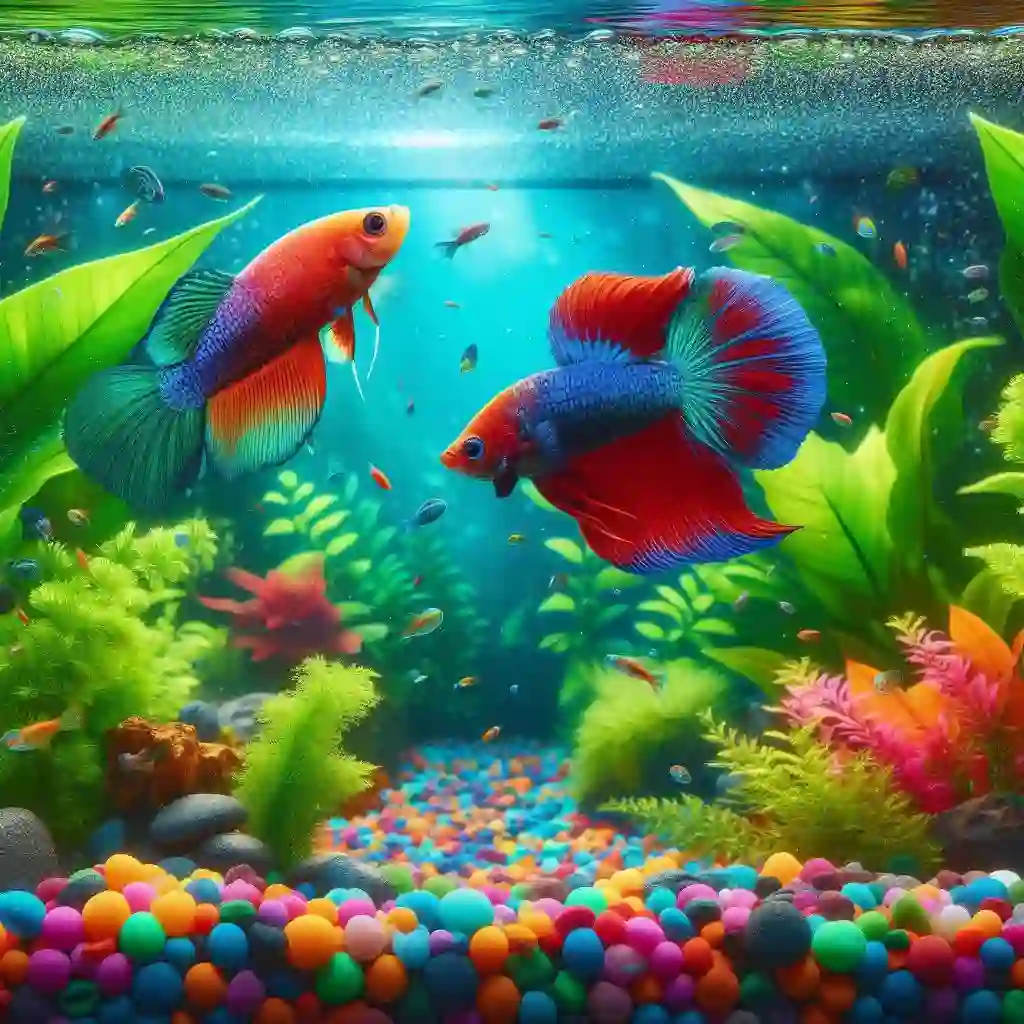
While it’s technically possible, it’s not always the best idea.
Why it might not work:
- Aggression: Bettas are notorious for their aggressive behavior, especially towards other fish with long fins or bright colors. Tetras, with their shimmering scales and flowing fins, might be seen as a threat or a rival, leading to fin nipping or even attacks.
- Water requirements: Bettas thrive in warm, slow-moving water with a pH between 6.5-7.5. Tetras, on the other hand, prefer cooler, faster-moving water with a pH between 6.0-7.0. Meeting the needs of both species can be challenging.
- Space and territory: Bettas are territorial and need plenty of space to claim as their own. Tetras, being schooling fish, require a school of at least 6-10 individuals to feel secure. In a small tank, this can lead to conflicts over space and resources.
When it might work:
- Large tanks: If you have a spacious tank (at least 20 gallons) with plenty of hiding places, plants, and visual barriers, you might be able to keep tetras and bettas together. This setup would allow both species to coexist without feeling threatened or territorial.
- Peaceful betta breeds: Some betta breeds, like the Veiltail or Halfmoon, are known to be more docile and less aggressive. If you have a peaceful betta, it might be possible to keep it with tetras.
- Introduce them slowly: If you do decide to keep tetras and bettas together, introduce them slowly and under close observation. Start by keeping them in separate tanks, then gradually introduce them to each other in a neutral area.
Alternatives:
- Keep them separate: If you’re unsure about keeping tetras and bettas together, consider keeping them in separate tanks. This will ensure the well-being and happiness of both species.
- Choose compatible tankmates: If you want to keep your betta with other fish, consider species that are more compatible, such as neon tetras, harlequin rasboras, or corydoras catfish.
The Aggressive Nature of Bettas: Understanding the Risks

Bettas are known for their aggressive behavior, which can make them a challenging tankmate for other fish. When considering keeping tetras with bettas, it’s essential to understand the risks involved.
Why are bettas aggressive?
- Territorialism: Bettas are naturally territorial and will defend their space from other fish.
- Fin nipping: Bettas have a tendency to nip at the fins of other fish, which can cause stress and injury.
- Dominance: Bettas are naturally dominant fish and may see other fish as a threat to their dominance.
Risks of keeping tetras with bettas:
- Fin nipping: Tetras have long, flowing fins that can be tempting for a betta to nip at.
- Stress and anxiety: The aggressive behavior of a betta can cause stress and anxiety in tetras, leading to illness or even death.
- Injuries: Fights between bettas and tetras can result in injuries, such as torn fins or scales.
- Death: In extreme cases, a betta may kill a tetra, especially if it’s a smaller or weaker fish.
What can you do to minimize the risks?
- Provide plenty of hiding places: Add plants, rocks, and other decorations to give tetras a place to hide from the betta.
- Introduce them slowly: Introduce the tetras and betta slowly and under close observation to prevent immediate aggression.
- Monitor behavior: Watch for signs of aggression, such as fin nipping or chasing, and separate the fish if necessary.
- Choose a peaceful betta: Look for betta breeds that are known to be more docile and peaceful, such as the Veiltail or Halfmoon.
Water Requirements: Can Tetras and Bettas Coexist?
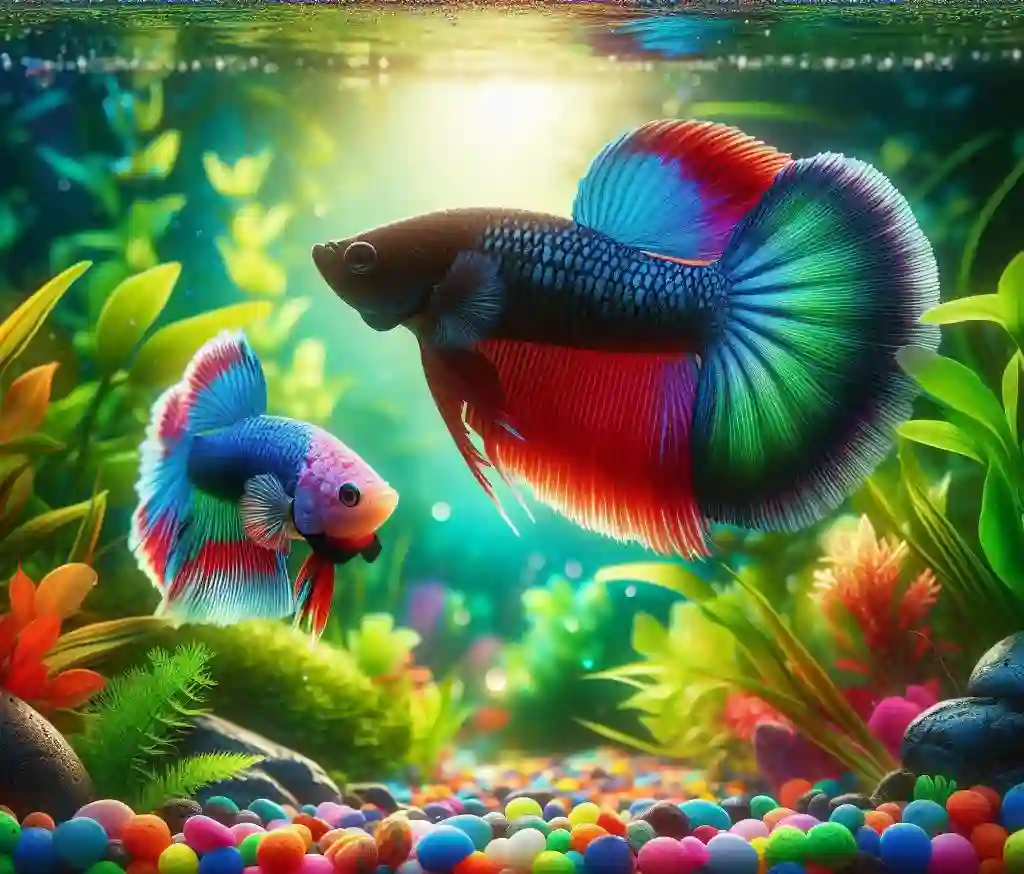
Tetra Water Requirements:
- pH: Tetras thrive in slightly acidic to neutral water with a pH between 6.0-7.0.
- Temperature: Tetras prefer cooler water temperatures between 72°F-82°F (22°C-28°C).
- Water hardness: Tetras can tolerate soft to moderately hard water with a dGH of 5-15.
- Water movement: Tetras prefer gentle water movement and can thrive in well-oxygenated water.
Betta Water Requirements:
- pH: Bettas prefer slightly acidic to neutral water with a pH between 6.5-7.5.
- Temperature: Bettas thrive in warm water temperatures between 76°F-82°F (24°C-28°C).
- Water hardness: Bettas can tolerate soft to moderately hard water with a dGH of 5-15.
- Water movement: Bettas prefer slow-moving water with minimal currents.
Can tetras and bettas coexist?
While both species can thrive in similar water conditions, there are some differences that need to be considered:
- Temperature: Tetras prefer cooler water, while bettas prefer warmer water. A compromise temperature of around 78°F (25°C) can be suitable for both species.
- pH: Tetras prefer a slightly more acidic pH, while bettas prefer a slightly more alkaline pH. A pH of around 6.5-7.0 can be suitable for both species.
Tips for creating a compatible environment:
- Use a heater: To maintain a stable temperature, use a heater to keep the water between 76°F-82°F (24°C-28°C).
- Monitor pH: Regularly test the pH and make adjustments as necessary to maintain a stable pH between 6.5-7.0.
- Provide water movement: Use a gentle water circulation system to provide oxygenation and water movement.
- Regular water changes: Perform regular water changes (10-20% every week) to maintain water quality and stability.
Space and Territory: The Importance of a Large Tank
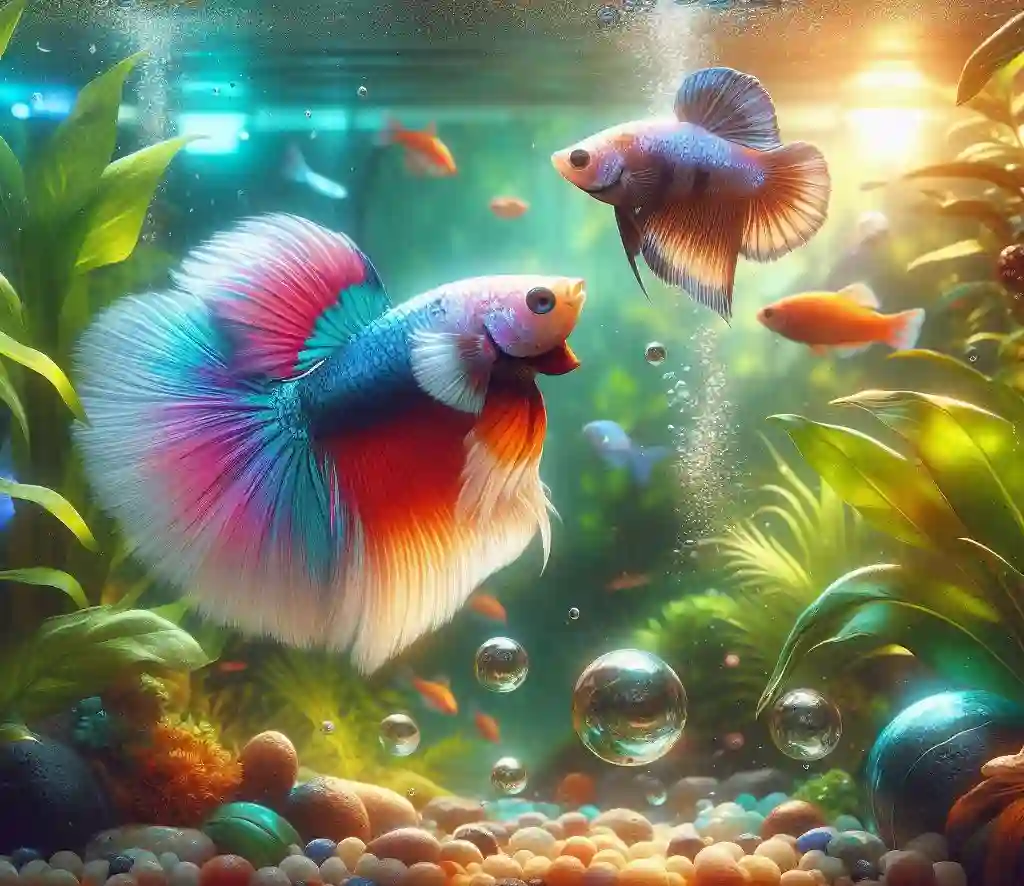
Why a large tank is necessary:
- Territorialism: Bettas are naturally territorial and need a large enough space to claim as their own.
- Schooling behavior: Tetras are schooling fish that thrive in groups, requiring a large enough tank to accommodate their social behavior.
- Reducing aggression: A larger tank can help reduce aggression between tetras and bettas by providing ample space for each species to coexist.
Minimum tank size recommendations:
- 20 gallons: A minimum tank size of 20 gallons is recommended for keeping tetras and bettas together.
- Long and wide: A longer and wider tank is better than a tall and narrow one, as it provides more swimming space for both species.
Benefits of a large tank:
- Reduced stress: A larger tank can reduce stress and aggression between tetras and bettas.
- Increased swimming space: A larger tank provides more swimming space for both species, reducing competition for resources.
- Improved water quality: A larger tank can improve water quality by providing a more stable environment and reducing the risk of water pollution.
Tips for setting up a large tank:
- Provide hiding places: Add plants, rocks, and other decorations to provide hiding places for tetras and bettas.
- Create separate areas: Create separate areas for tetras and bettas to reduce competition and aggression.
- Use a tank divider: Consider using a tank divider to separate the tank into different areas, providing a sense of security for both species.
- Monitor water quality: Regularly test the water quality and perform regular water changes to maintain a healthy environment.
The Schooling Nature of Tetras: Can They Thrive with a Betta?
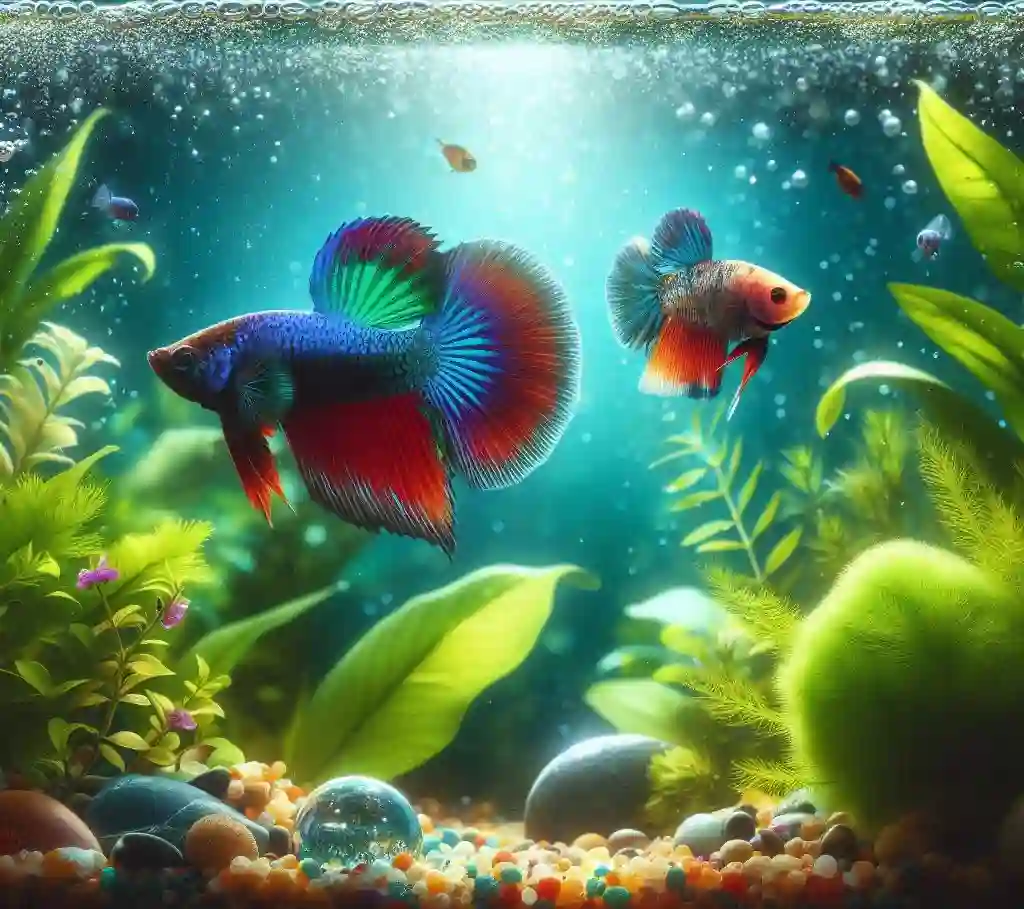
The importance of schooling:
- Social behavior: Tetras are naturally social fish that thrive in groups, and their schooling behavior is essential for their well-being.
- Reduced stress: Schooling helps reduce stress and anxiety in tetras, making them more resilient to changes in their environment.
- Improved health: Schooling behavior can improve the overall health of tetras by reducing aggression and promoting a sense of security.
Challenges of keeping tetras with a betta:
- Aggression: Bettas are known to be aggressive towards other fish, which can disrupt the schooling behavior of tetras.
- Fin nipping: Bettas may nip at the fins of tetras, causing stress and injury.
- Competition for resources: Tetras and bettas may compete for food and resources, leading to stress and aggression.
Peaceful Betta Breeds: A Possible Solution?
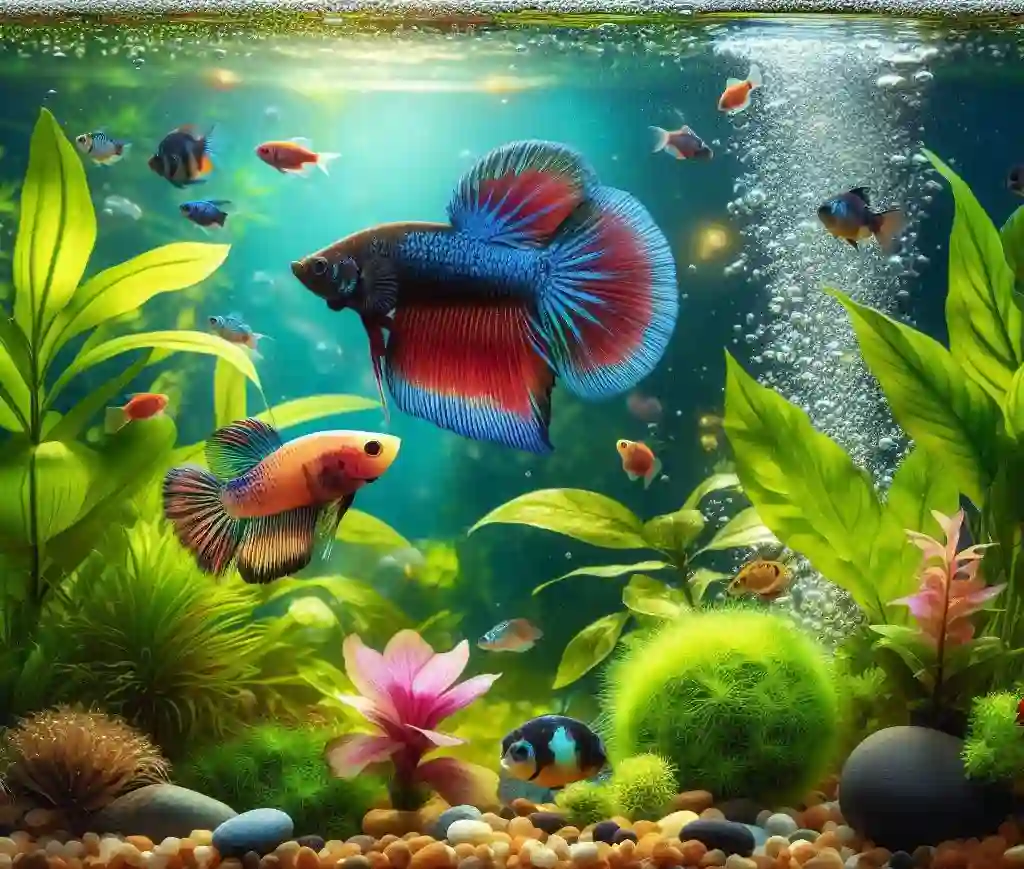
Peaceful betta breeds:
- Veiltail: Known for their long, flowing tails and calm demeanor, Veiltails are a popular choice for community aquariums.
- Halfmoon: With their impressive fins and peaceful nature, Halfmoons are a great option for keeping with tetras.
- Crown Tail: Crown Tails are known for their majestic appearance and calm behavior, making them a suitable choice for a community tank.
- Dumbo: Dumbo bettas are known for their large, elephant-ear-like fins and peaceful nature, making them a great option for keeping with tetras.
Characteristics of peaceful betta breeds:
- Less aggressive: Peaceful betta breeds tend to be less aggressive and more tolerant of other fish.
- More docile: These breeds are generally more docile and less likely to harass other fish.
- Less fin nipping: Peaceful betta breeds are less likely to nip at the fins of other fish, reducing stress and aggression.
Introducing Tetras and Bettas: A Step-by-Step Guide
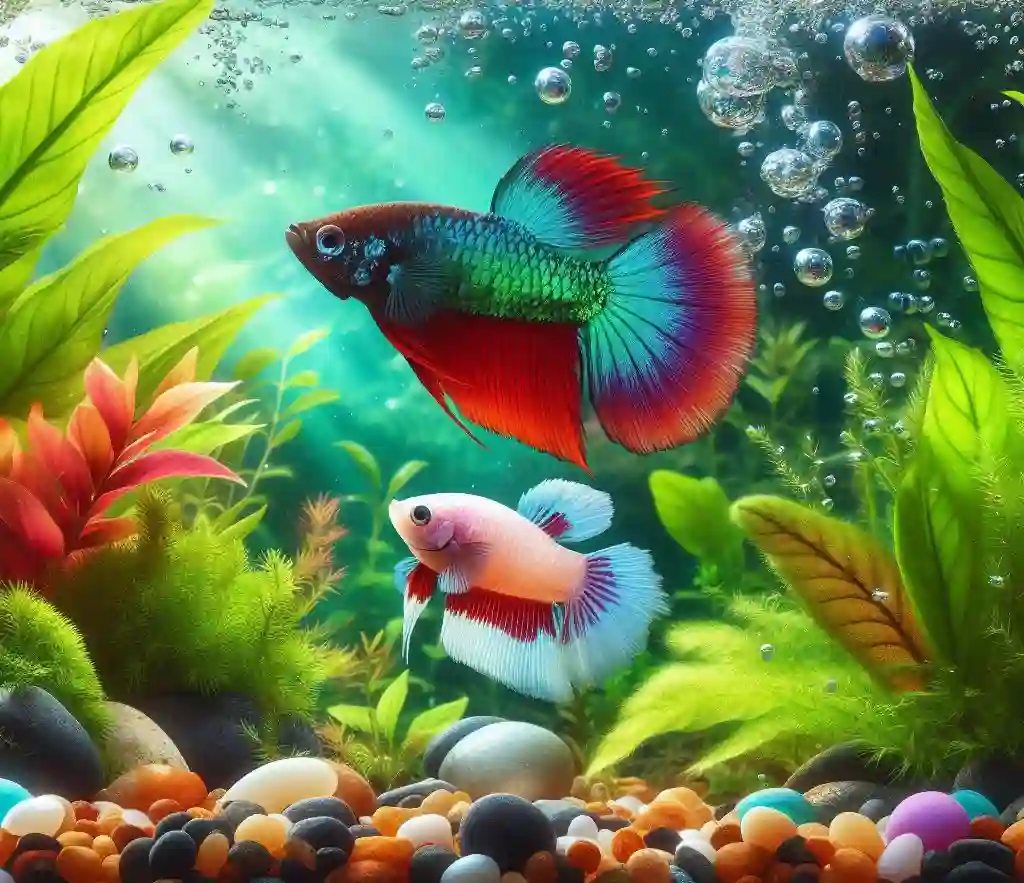
Step 1: Prepare the Tank
- Set up the tank: Ensure the tank is cycled, and the water parameters are stable.
- Add decorations: Add plants, rocks, and other decorations to provide hiding places for both species.
- Maintain water quality: Regularly test the water quality and perform water changes as necessary.
Step 2: Acclimate the Tetras
- Float the unopened bag: Float the unopened bag containing the tetras in the tank for 15-20 minutes to allow the water temperatures to equalize.
- Add a small amount of tank water: Add a small amount of tank water to the bag every 5 minutes to gradually acclimate the tetras to the tank’s water parameters.
- Release the tetras: Release the tetras into the tank and monitor their behavior.
Step 3: Acclimate the Betta
- Float the unopened bag: Float the unopened bag containing the betta in the tank for 15-20 minutes to allow the water temperatures to equalize.
- Add a small amount of tank water: Add a small amount of tank water to the bag every 5 minutes to gradually acclimate the betta to the tank’s water parameters.
- Release the betta: Release the betta into the tank, but keep it separate from the tetras using a tank divider or a separate container.
Step 4: Introduce the Betta to the Tetras
- Monitor behavior: Observe the behavior of both species for signs of aggression or stress.
- Gradually introduce the betta: Gradually introduce the betta to the tetras, starting with short periods of time and increasing the duration.
- Monitor for aggression: Monitor the behavior of both species for signs of aggression, and separate them if necessary.
Step 5: Monitor and Maintain
- Monitor water quality: Regularly test the water quality and perform water changes as necessary.
- Monitor behavior: Continuously monitor the behavior of both species for signs of aggression or stress.
- Make adjustments: Make adjustments to the tank’s environment or the introduction process as necessary to ensure a harmonious coexistence.
Monitoring Behavior: Signs of Stress and Aggression
Signs of Stress:
- Rapid breathing: Rapid breathing or gasping at the surface of the water can indicate stress in both tetras and bettas.
- Erratic swimming: Erratic or darting swimming patterns can be a sign of stress or anxiety in both species.
- Hiding: Tetras and bettas may hide more frequently or for extended periods, indicating stress or fear.
- Loss of appetite: A decrease in appetite or refusal to eat can be a sign of stress in both species.
- Changes in color: Changes in color or dullness can indicate stress or illness in both tetras and bettas.
Signs of Aggression:
- Fin nipping: Bettas may nip at the fins of tetras, causing damage or stress.
- Chasing: Bettas may chase tetras, causing them to become stressed or anxious.
- Territorial behavior: Bettas may defend their territory from tetras, leading to aggression and stress.
- Aggressive posturing: Bettas may display aggressive postures, such as flaring their fins or making threatening gestures towards tetras.
- Injuries: Injuries or wounds on either species can indicate aggression or fighting.
Alternatives to Keeping Tetras and Bettas Together: Separate Tanks or Compatible Tankmates
Separate Tanks:
- Dedicated tanks: Keep tetras and bettas in separate tanks, each tailored to their specific needs and requirements.
- Optimize tank conditions: Optimize the tank conditions for each species, ensuring they thrive in their respective environments.
- Reduced competition: Eliminate competition for resources and reduce stress by keeping them in separate tanks.
Compatible Tankmates:
- Research compatible species: Research and choose tankmates that are compatible with tetras or bettas, ensuring a harmonious coexistence.
- Neon Tetras and Harlequin Rasboras: Neon Tetras and Harlequin Rasboras make great tankmates, as they are both peaceful and schooling fish.
- Betta and Corydoras Catfish: Bettas can be kept with Corydoras Catfish, which are peaceful bottom-dwellers that won’t compete for food or resources.
Benefits of Separate Tanks or Compatible Tankmates:
- Reduced stress: Separate tanks or compatible tankmates reduce stress and aggression, promoting a healthy and thriving environment.
- Optimized tank conditions: Each species can thrive in their optimized tank conditions, ensuring they receive the care they need.
- Increased biodiversity: Keeping multiple tanks or choosing compatible tankmates can increase biodiversity and create a more interesting aquarium environment.

Hello, I’m Aria Cooper, the heart and soul behind Swimmy Buddies. As a devoted fish aficionado, I share my aquatic adventures and expertise to inspire your own underwater explorations. 🐠🌊




